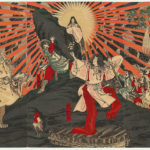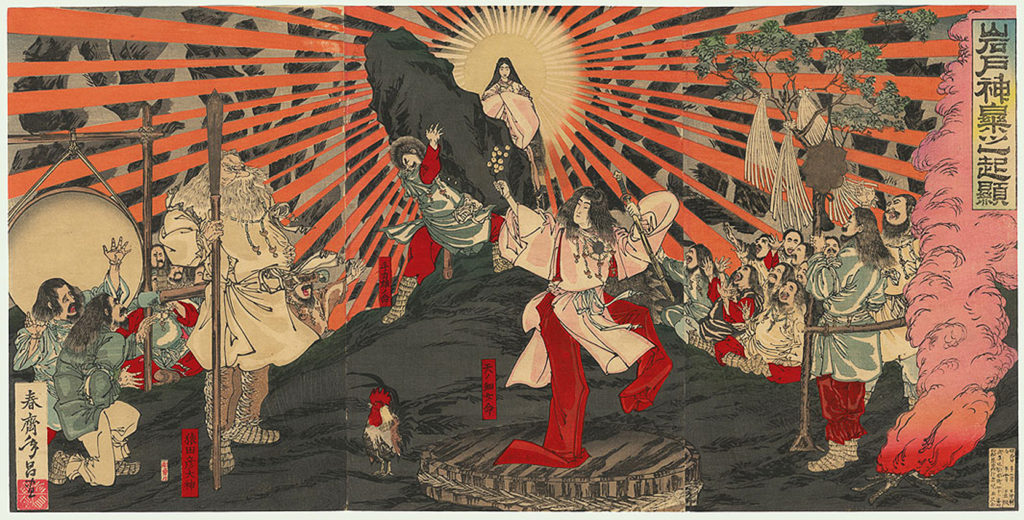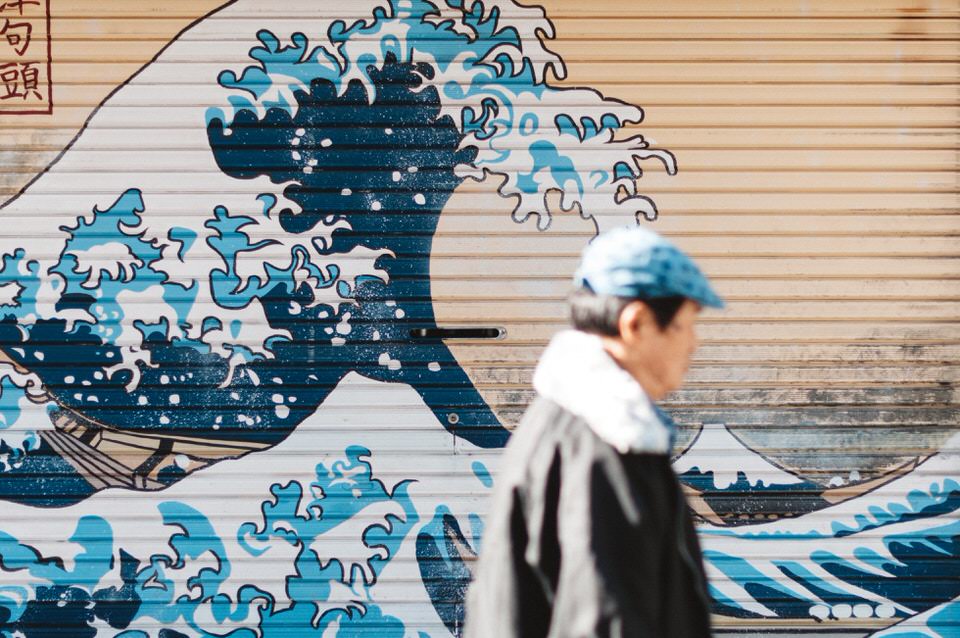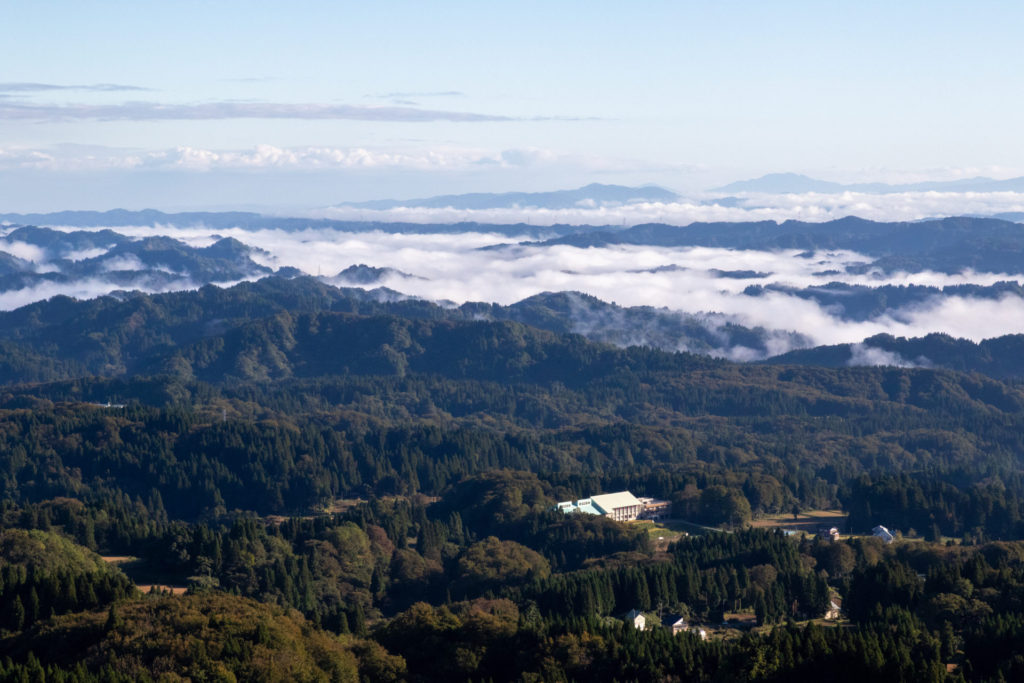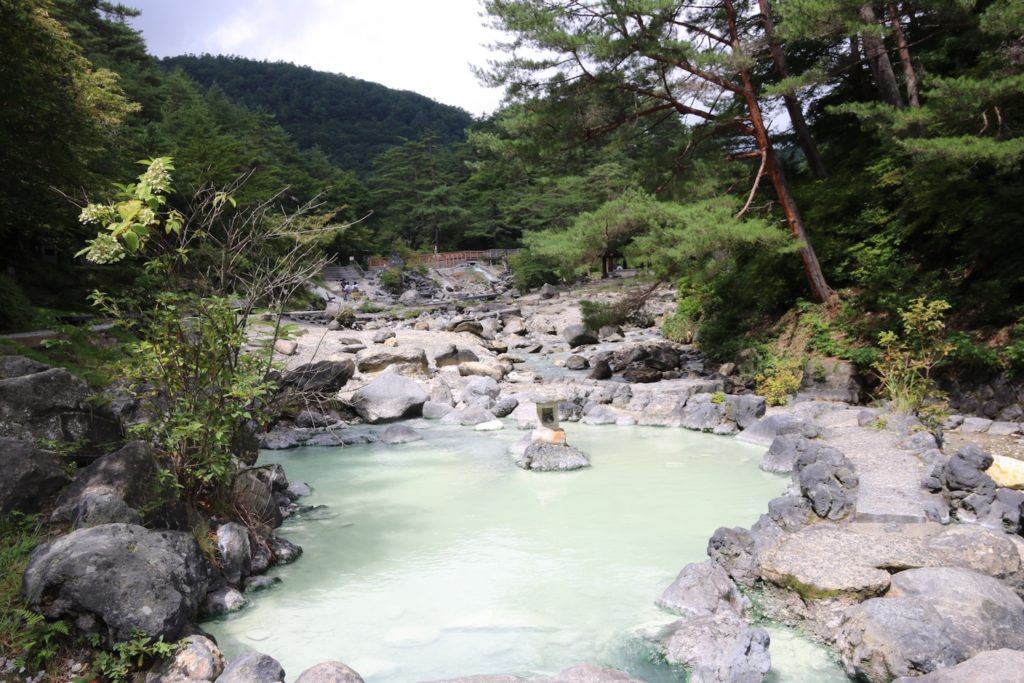In Japan, the main religions are Buddhism and Shintoism, but there is also a uniquely developed faith in Japan called Shugendo.
What is Shugendo?
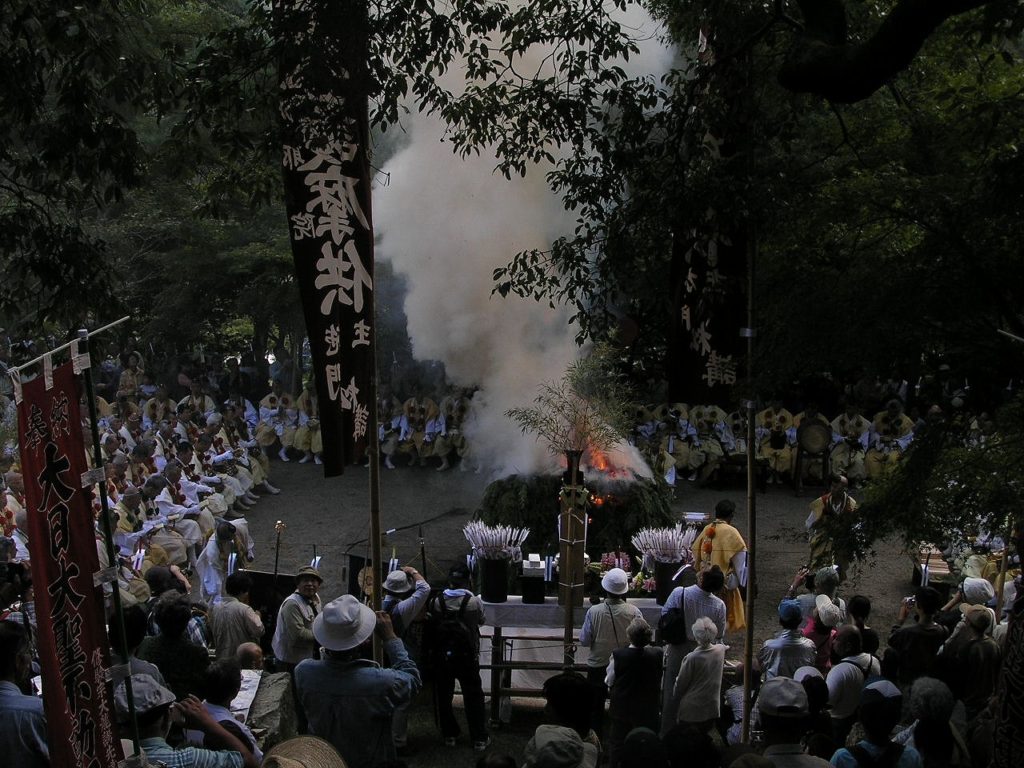
Shugendo is a unique faith that incorporates elements of Buddhism, Taoism, and Esoteric Buddhism into Japanese ancient mountain worship. In Japan, there was originally an animistic belief in nature. Not only mountains, but also rivers, plants and animals were believed to have gods in them, and people worshipped them for various purposes, such as praying for a good harvest and preventing disasters. This animistic primitive belief later developed into Shintoism.
Learn more about Shinto here.
-

-
Major Religion of Japan : Ancient Shinto, Shinto, and Buddhism
The main religions in Japan are said to be Shinto and Buddhism, but what exactly is Shinto? What is Shinto? Shinto is a indigenous religious beliefs and practices that emerged spontaneously from ancient times in Japan. There is a belief in the so-called "eight million kami": the sun kami for the sun, the water kami for water, the tree kami for trees, and so on.("eight million" is an example of a large number.) Also, the original beliefs do not have founders. There was no "holy book," the equivalent of the Bible in Christianity or the Koran in Islam. It is ...
続きを見る
Among the animistic primitive beliefs, mountain worship was linked to other religions such as Buddhism, Taoism, and Esoteric Buddhism, and developed uniquely as "Shugendo".
What do mountains mean to Japanese people?
In Japan, 75% of the land is mountainous, and for the Japanese people, mountains have always been a source of resources for living. In addition to food, the mountains provide the people with trees for building temples and other buildings. The mountains also provide the people with melted snow and rainwater, giving them a good harvest.
According to "よく分かる山岳信仰" by Naka Uryu, there has been a custom in Japan since ancient times of "wind burial - Huso(風葬)" in which people who have died in a village are dumped in the nearby mountains. The purpose of dumping the corpse away from the living area was to prevent the spread of contagious diseases, etc. Because of this custom, mountains were also recognized as the "other world" where the spirits of the dead would go.
In addition, mountains were also fearsome places that brought disasters such as landslides and volcanoes. Therefore, mountains were an awe-inspiring place for humans.
Mountain Kami and messengers
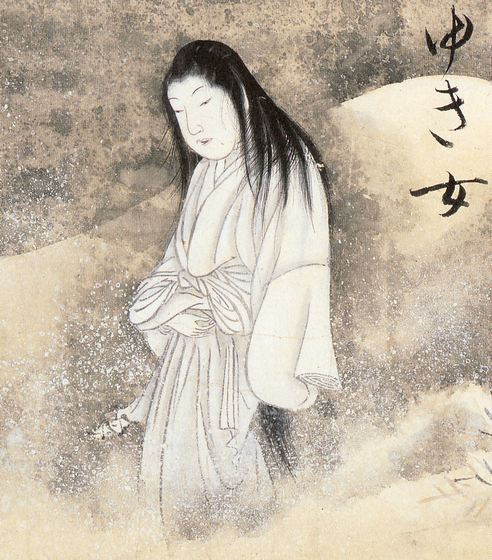
According to "よく分かる山岳信仰" by Naka Uryu, people had a common perception that mountains were otherworldly and that if they were touched by the anger of the mountain gods, they would suffer from various disasters. Oni(鬼/Demon), Tengu, Yamamba (山姥/Mountain witch), and Yuki-onna(雪女/snow woman) are said to have been created from this perception.
It is also believed that various creatures follow the mountain gods and are called "Shinshi". The fox of the Inari Shrine, the monkey of the Hiyoshi Taisha Shrine, the deer of the Kasuga Taisha Shrine, and the Yatagarasu (Crow) of the Kumano Shrine are typical examples of messengers of the mountain kami. It is said that the reason why birds and animals were regarded as messengers of the kami was because of the animistic belief in nature as well as mountains.
Learn more about Oni here:
The Beginning of Mountain Beliefs
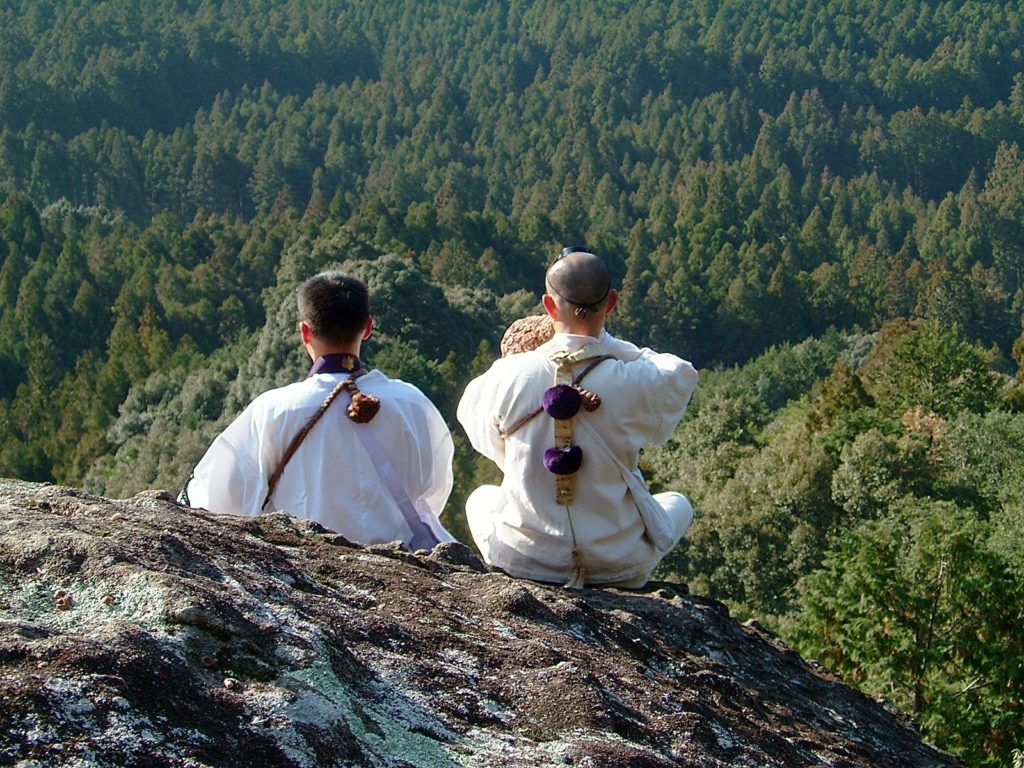
According to "よく分かる山岳信仰" by Naka Uryu, mountain ascetics already existed before the arrival of Buddhism (538), and it is believed that they practiced Shinto and Taoist sacred arts. As it was an important place for humans to bring resources, as well as being the other world where the souls of the dead went, and the realm where the mountain gods resided, it was believed that if practitioners endured severe training in the mountains, they would gain superhuman powers. Later on, these unique ideas and practices were combined with Buddhism and developed in a unique way.
Shugendo : a fusion of mountain worship and Buddhism
Shugendo is said to be the original mountain worship that incorporated Buddhism into it. In addition to Buddhism, various other elements such as Taoism, Shintoism, and Yin-Yang-Do were also incorporated to create a unique faith. In the Heian period (794-1185), Esoteric Buddhism was introduced to Japan, and the teachings of Esoteric Buddhism were also incorporated into mountain asceticism.
The Decline of Shugendo
Shugendo continued to grow until the end of the Edo period, but was severely restricted by the policy of separation of Shinto and Buddhism during the Meiji Restoration. In 1868, the Meiji government issued a decree to separate Shintoism from Buddhism in order to make Shintoism the "national religion. (Until then, it was believed that Buddha appeared in the form of a temporary Shinto deity in order to save people. (Until then, it was believed that Buddha appeared in the temporary form of a Shinto deity in order to save people; see the Honji Suijaku theory.) In 1872, an ordinance banning Shugendo was promulgated.
Representative Sacred Sites
Even today, there are sacred lands rooted in mountain worship that have been the object of worship for centuries.
| Mountains | related temples and shrines | Prefecure |
| Mt.Osorezan | Jizo Hall, Bodaiji Temple | Aomori |
| Mt. Iwaki | Iwakiyama Shrine | Aomori |
| Mt. Gassan (Dewa-Sanzan) | Gassan Shrine | Yamagata |
| Mt. Yudono (Dewa-Sanzan) | Yudonosan Shrine | Yamagata |
| Mt. Haguro (Dewa-Sanzan) | Dewa Sanzan Shrine, Arasawa Temple | Yamagata |
| Mt.Hayama | Hayama Shrine, Jion Temple, etc. | Yamagata |
| Mt. Hayachine | Hayachine Shrine | Iwate |
| Mt. Nikko | Rinnoji Temple, Futarasan Shrine | Tochigi |
| Mt. Tsukuba | Tsukubasan Shrine, Chuzenji Temple | Ibaraki |
| Mt. Hakkai | Hakkai Shrine, Ryukokuji Temple | Niigata |
| Mt. Tateyama | Tateyama Osan Shrine | Toyama |
| Mt. Shirayama | Shirayamahime Shrine | Ishikawa |
| Mt. Sekido | Tenpyoji Temple, Isurugihiko Shrine | Ishikawa |
| Mt Togakushi | Togakushi Shrine | Nagano |
| Mt Iiiduna | Iiduna Shrine | Nagano |
| Mt. Akagi | Akagi Shrine | Gunma |
| Mt. Takao | Yakuo-in | Tokyo |
| Mt. Mitake | Mitake Shrine | Tokyo |
| Mt. Kiso-ontake | Mitake Shrine | Tokyo |
| Mt. Oyama | Oyama Afuri Shrine, Oyama Temple | Kanagawa |
| Mt. Hakone | Hakone Shrine | Kanagawa |
| Mt Fuji | Fujisan Hongu Asama Taisha Shrine, etc | Shizuoka |
| Mt. Akiba | Akiba Shrine, Akiba Temple | Shizuoka |
| Mt Izu | Izusan Shrine | Shizuoka |
| Mt. Kumano | Kumano Hongu Taisha, Kumano Hayatama Taisha, Kumano Nachi Taisha. | Wakayama |
| Mt. Katsuragi | Ryuo Shrine | Wakayama |
| Mt. Yoshino | Kinpusenji temple zao-do, Kinpu Shrine | Nara |
| Mt Kobngo | Katsuragi Shrine, Tembourinji Temple | Nara |
| Mt. Hiei | Nemoto Chudo, Shakado, etc | Shiga |
| Mt. Hira | Meio-in Temple, Jishu Shrine | Shiga |
| Mt. Atago | Atago Shrine, Tsukiwa Temple. | Kyoto |
| Mt. Kasagi | Kasagi Temple | Kyoto |
| Mt. Kurama | Kuramadera Temple, Yuki Shrine | Kyoto |
| Mt. Hoki-Daisen | Oogamiyama shrine, Daisenji Temple, Shimoyama Shrine | Tottori |
| Mt. Usbhiroyama | Ushiiroyama Shrine, Dosenji Temple | Okayama |
| Mt. Misen | Miyama Daishoin Temple, Itsukushima Shrine | Hiroshima |
| Mt. Ishizuchi | Ishizuchi Shrine, Maegami Temple, Yokomine Temple | Ehime |
| Mt. Zozu | Kotohiragu | Kagawa |
| Mt. Tsurugi | Otsurugi Shrine, Ryukoji Temple, Enpukuji Temple | Tokushima |
| Mt. Ehbiko | Ehikosan Jingu | Fukuoka |
| Mt. Kubote | Kubotesaan Kunitama Shrine | Fukuoka |
| Mt. Homan | Kamado Shrine | Fukuoka |
| Mt.Sefuri | Sefuri Shrine | Saga |
| Mt. Rokugoman | Futago Temple | Oita |
| Mt. Aso | Aso Shrine | Kumamoto |
Reference: Naka Uryu, "よく分かる山岳信仰" (2020)


